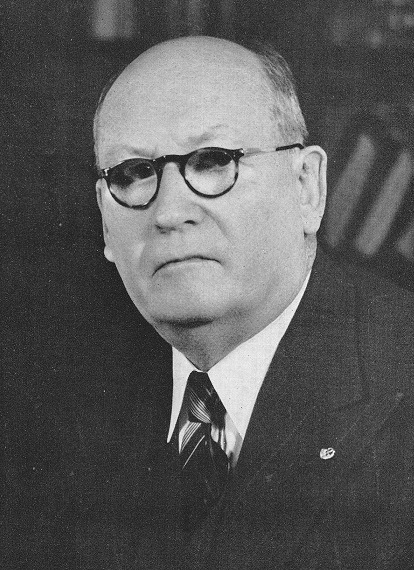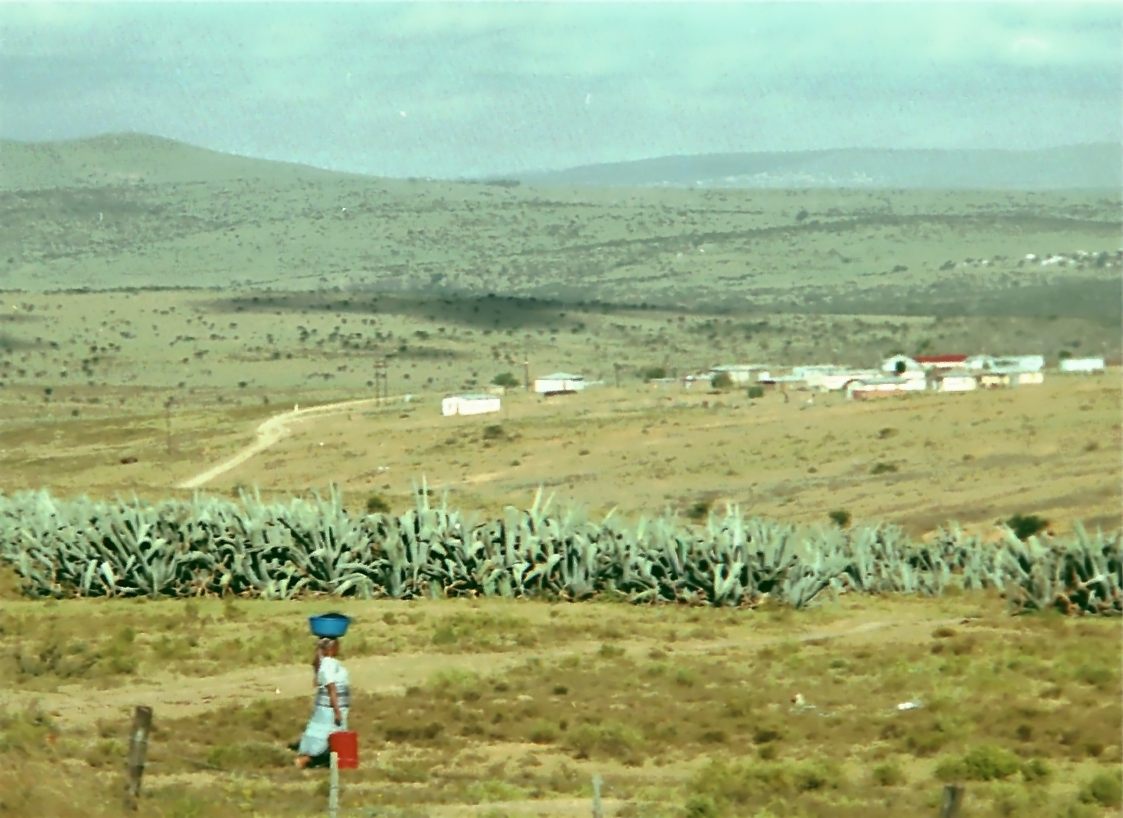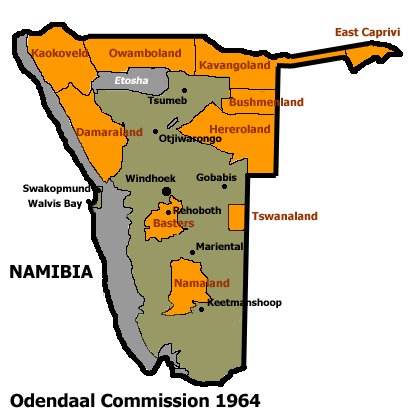|
Bantustans
A Bantustan (also known as a Bantu homeland, a black homeland, a black state or simply known as a homeland; ) was a territory that the National Party administration of the Union of South Africa (1910–1961) and later the Republic of South Africa (1961–1994) set aside for black inhabitants of South Africa and South West Africa (now Namibia), as a part of its policy of apartheid., "1. one of the areas in South Africa where black people lived during the apartheid system; 2. SHOWING DISAPPROVAL any area where people are forced to live without full civil and political rights." The term, first used in the late 1940s, was coined from ''Bantu'' (meaning "people" in some of the Bantu languages) and '' -stan'' (a suffix meaning "land" in Persian and other Persian-influenced languages). It subsequently came to be regarded as a disparaging term by some critics of the apartheid-era government's ''homelands''. The Pretoria government established ten Bantustans in South Africa, and ... [...More Info...] [...Related Items...] OR: [Wikipedia] [Google] [Baidu] |
Apartheid
Apartheid ( , especially South African English: , ; , ) was a system of institutionalised racial segregation that existed in South Africa and South West Africa (now Namibia) from 1948 to the early 1990s. It was characterised by an authoritarian political culture based on ''baasskap'' ( 'boss-ship' or 'boss-hood'), which ensured that South Africa was dominated politically, socially, and economically by the nation's minority White South Africans, white population. Under this minoritarianism, minoritarian system, white citizens held the highest status, followed by Indian South Africans, Indians, Coloureds and Ethnic groups in South Africa#Black South Africans, black Africans, in that order. The economic legacy and social effects of apartheid continue to the present day, particularly Inequality in post-apartheid South Africa, inequality. Broadly speaking, apartheid was delineated into ''petty apartheid'', which entailed the segregation of public facilities and social ev ... [...More Info...] [...Related Items...] OR: [Wikipedia] [Google] [Baidu] |
Ovamboland
Ovamboland, also referred to as Owamboland, was a Bantustan and later a non-geographic ethnic-based second-tier authority, the Representative Authority of the Ovambos, in South West Africa (present-day Namibia). The apartheid government stated that the goal was for it to be a self-governing homeland for the Ovambo people. Practically, however, it was intended by the apartheid government as a reservation that forced them into cheap labour by limiting movement; Ovambo men were not allowed outside Ovamboland unless they signed as a contract labourer for 16 months, while women were not allowed out at all. The term originally referred to the parts of northern Namibia inhabited by the Ovambo ethnic group: namely, the area controlled by the traditional Ovambo kingdoms in pre-colonial and early colonial times, such as Ondonga, Ongandjera, and Oukwanyama. Its endonym is ''Ovambo ~ Owambo''. Background In the 1960s, South Africa, which was administering South West Africa under a ... [...More Info...] [...Related Items...] OR: [Wikipedia] [Google] [Baidu] |
Ciskei
Ciskei ( , meaning ''on this side of Great Kei River, [the river] Kei''), officially the Republic of Ciskei (), was a Bantustan for the Xhosa people, located in the southeast of South Africa. It covered an area of , almost entirely surrounded by what was then the Cape Province, and possessed a small coastline along the shore of the Indian Ocean. Under South Africa's policy of apartheid, land was set aside for black peoples in self-governing territories. Ciskei was designated as one of two homelands, or "Bantustans", for Xhosa language, Xhosa-speaking people. Xhosa people were forcibly resettled in the Ciskei and Transkei, the other Xhosa homeland. In contrast to the Transkei, which was largely contiguous and deeply rural, and governed by hereditary chiefs, the area that became the Ciskei had initially been made up of a patchwork of "reserves", interspersed with pockets of white-owned farms. In Ciskei, there were elected headmen and a relatively educated working-class populace, ... [...More Info...] [...Related Items...] OR: [Wikipedia] [Google] [Baidu] |
Venda
Venda ( ), officially the Republic of Venda (; ), was a Bantustan in northern South Africa. It was fairly close to the South African border with Zimbabwe to the north, while, to the south and east, it shared a long border with another black homeland, Gazankulu. It is now part of the Limpopo province. Venda was founded by the South African government as a homeland for the Venda people, speakers of the Venda language.Lahiff, p. 55. The United Nations and international community refused to recognise Venda (or any other Bantustan) as an independent state. History Venda was declared self-governing on 1 February 1973,Worldstatesman.com has a chronology of Venda's transition to nominal independence and reintegration into South Africa. with |
Transkei
Transkei ( , meaning ''the area beyond Great Kei River, [the river] Kei''), officially the Republic of Transkei (), was an list of historical unrecognized states and dependencies, unrecognised state in the southeastern region of South Africa from 1976 to 1994. It was, along with Ciskei, a Bantustan for the Xhosa people, and operated as a nominally independent parliamentary democracy. Its capital was Mthatha, Umtata (renamed Mthatha in 2004). Transkei represented a significant precedent and historic turning point in South Africa's policy of apartheid and "separate development"; it was the first of four territories to be declared independence, independent of South Africa. Throughout its existence, it remained an internationally unrecognised, diplomatically isolated, politically unstable ''de facto'' one-party state, which at one point broke relations with South Africa, the only country that acknowledged it as a legal entity. In 1994, it was reintegrated into its larger neighbour ... [...More Info...] [...Related Items...] OR: [Wikipedia] [Google] [Baidu] |
People Of Indigenous South African Bantu Languages
Bantu speaking people are the majority ethno-racial group in South Africa. They are descendants of Southern Bantu-speaking peoples who settled in South Africa during the Bantu expansion. They are referred to in various census as ''blacks'', or ''Native Africans''. History Early history Archaeological evidence suggests that ''Homo sapiens'' inhabited the region for over 100,000 years, with sedentary agriculture occurring since at least 100 CE. Based on prehistorical archaeological evidence of pastoralism and farming in southern Africa, the settlements in sites located in the southernmost region of modern Mozambique established around are some of the oldest and most proximate pieces of archaeological evidence related to the South African Bantu-speaking peoples. Ancient settlements remains found thus far similarly based on pastoralism and farming within South Africa were dated . Around 1220, the Kingdom of Mapungubwe formed in the Shashe-Limpopo Basin, with rainmaking crucial ... [...More Info...] [...Related Items...] OR: [Wikipedia] [Google] [Baidu] |
East Caprivi
East Caprivi or Itenge was a Bantustan and later a non-geographic ethnic-based second-tier authority, the Representative Authority of the Caprivis in South West Africa (present-day Namibia), intended by the apartheid government to be a self-governing homeland for the Masubiya people. Administrative history Bantustan (1972–1980) It was set up in 1972, in the very corner of the Namibian panhandle called the Caprivi Strip. It was granted a self-governing status in 1976. Unlike the other homelands in South West Africa, East Caprivi was administered through the Department of Bantu Administration and Development in Pretoria. Representative authority (1980–1989) Following the Turnhalle Constitutional Conference the system of Bantustans was replaced in 1980 by Representative Authorities which functioned on the basis of ethnicity only and were no longer based on geographically defined areas. Representative Authorities had executive and legislative competencies, being made u ... [...More Info...] [...Related Items...] OR: [Wikipedia] [Google] [Baidu] |
Bophuthatswana
Bophuthatswana (, ), officially the Republic of Bophuthatswana (; ), and colloquially referred to as the Bop and by outsiders as Jigsawland (In reference to its enclave-ridden borders) was a Bantustan (also known as "Homeland", an area set aside for members of a specific ethnicity) that was declared (nominally) independent by the apartheid regime of South Africa in 1977. However, like the other Bantustans of Ciskei, Transkei and Venda, its independence was not recognized by any country other than South Africa. Bophuthatswana was the second Bantustan to be declared an independent state by the Apartheid government, after Transkei. Its territory constituted a scattered patchwork of enclaves spread across what was then Cape Province, Orange Free State (province), Orange Free State and Transvaal (province), Transvaal. Its seat of government was Mmabatho, which is now a suburb of Mahikeng. On 27 April 1994, it was reintegrated into South Africa with the coming into force of the count ... [...More Info...] [...Related Items...] OR: [Wikipedia] [Google] [Baidu] |
South West Africa
South West Africa was a territory under Union of South Africa, South African administration from 1915 to 1990. Renamed ''Namibia'' by the United Nations in 1968, Independence of Namibia, it became independent under this name on 21 March 1990. South West Africa bordered People's Republic of Angola, Angola (Portuguese Angola, a Portuguese colony before 1975), Botswana (Bechuanaland Protectorate, Bechuanaland before 1966), South Africa, and Zambia (Northern Rhodesia before 1964). During its administration, South Africa applied its own apartheid system in the territory of South West Africa. A German colonial empire, German colony known as German South West Africa from 1884 to 1915, it was made a League of Nations mandate of the Union of South Africa following German Empire, Germany's defeat in the World War I, First World War. Although the mandate was repealed by the United Nations on 27 October 1966, South African control over the territory continued. The territory was administ ... [...More Info...] [...Related Items...] OR: [Wikipedia] [Google] [Baidu] |
Kavangoland
Kavangoland was a Bantustan and then later a non-geographic ethnic-based second-tier authority, the Representative Authority of the Kavangos, in South West Africa (present-day Namibia), intended by the apartheid government to be a self-governing homeland for the Kavango people. Administrative history Bantustan (1968–1980) After the legal framework was established in 1968 as the Development of Self-Government for Native Nations in South-West Africa Act, 1968 (Act No. 54 of 1968), Kavangoland was set up in 1970 and self-government was granted in 1973. The Kavango Legislative Council had its administrative headquarters in Rundu; its first session opened in October 1970 in the presence of the South African Minister for Bantu Administration and Development. Representative authority (1980–1989) Following the Turnhalle Constitutional Conference the system of Bantustans was replaced in 1980 by Representative Authorities which functioned on the basis of ethnicity only and were n ... [...More Info...] [...Related Items...] OR: [Wikipedia] [Google] [Baidu] |
Lebowa
Lebowa was a Bantustan ("homeland") located in the Transvaal Province, Transvaal in northeastern South Africa. Seshego initially acted as Lebowa's capital while the purpose-built Lebowakgomo was being constructed. Granted internal self-government on 2 October 1972 and ruled for much of its existence by Cedric Phatudi, Lebowa was reincorporated into South Africa in 1994. It became part of the Limpopo province. The territory was not contiguous, being divided into two major and several minor portions. Even though Lebowa included large swathes of Sekukuniland and was seen as a home for the Northern Sotho speaking ethnic groups such as the Pedi people, it was also home to various non-Northern Sotho speaking tribes, including the Northern Ndebele people, Northern Ndebele, Tswana people, Batswana and Tsonga people, VaTsonga. Etymology The name "Lebowa" is an archaic spelling of the Northern Sotho word "leboa" which means "north". The name was chosen as a compromise between the vari ... [...More Info...] [...Related Items...] OR: [Wikipedia] [Google] [Baidu] |
QwaQwa
QwaQwa was a Bantustan ("homeland") in the central eastern part of South Africa. It encompassed a very small region of in the east of the former South African province of Orange Free State, bordering Lesotho. Its capital was Witsieshoek. It was the designated homeland of more than 180,000 Sesotho-speaking Basotho people. The frequent snow on the Maloti mountain peaks led the San to call the region "QwaQwa" (whiter than white).https://www.sahistory.org.za/place/phuthaditjhaba-free-state In Afrikaans it was known as "Witsieshoek", after Oetse (also Witsie and Wetsi), a Makholokoe chief who lived there from 1839 to 1856. Three tribes lived in the region, the Makholokoe, Bakoena and the Batlokoa. In 1969Flags of the world Discussion of name and history. Retrieved 10 April 2006. they were united and the area was named "KwaKwa". In ... [...More Info...] [...Related Items...] OR: [Wikipedia] [Google] [Baidu] |


